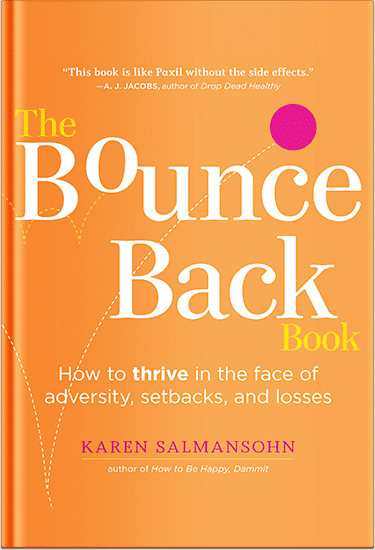 Discover effective strategies for how to say no to food pushers so you eat healthy and stick to your dietary goals.
Discover effective strategies for how to say no to food pushers so you eat healthy and stick to your dietary goals.
We’ve all encountered them: Food Pushers!
These are well-meaning friends, family members, or colleagues who insist on sharing their culinary masterpieces, no matter how many times we say no.
You’re trying to stick to your dietary choices, and suddenly, you’re faced with a lovingly prepared plate of triple-chocolate-fudge cookies.
Many can relate to this challenge of food pushers. Myself included. In fact that’s why I’m writing this article.
I’m a recovered emotional eater. Part of my recovery involved pushing back against food pushers! So I decided to share this article with all the tips which helped me!
(Psssst…. I share about this more inside my bestselling Stop Emotional Eating Online Course – which is both nutritionist and therapist recommended.)
What is a Food Pusher?
A food pusher is someone who frequently offers food to others, often persisting even after being declined. This person could be a friend, family member, or colleague who enjoys cooking or baking and feels compelled to share their creations.
- Their insistence usually comes from a place of love, care, or hospitality.
- Sometimes, they’re motivated by cultural or familial traditions where sharing food is a fundamental way to connect and nurture relationships.
- However, their eagerness to share can sometimes clash with your goals to eat healthy – or stay true to certain dietary preferences or restrictions.
7 Ways to Say No To Food Pushers
Learn to gracefully say no to unwanted (and often tempting) food offers – with these 7 tactful and effective strategies.
1. The Polite Decline:
A simple “No, thank you” with a genuine smile can be clear and firm, respecting both your boundaries and their feelings. A warm smile can soften the blow of rejection.
- Example: When offered a slice of cake, you might say, “No, thank you, I really appreciate it, but I’m good for now.”
- Why It Works: This approach is direct yet courteous. It acknowledges the offer without offending the giver.
- When to Use: This is ideal for casual interactions or when you’re confident the food pusher will accept your refusal without much fuss.
2. Compliment Sandwich:
Start and end with a compliment to acknowledge the effort, but still hold your ground around food. It’s diplomatic and often effective.
- Example: “Wow, that lasagna looks incredible, and I know you’re an amazing cook! I’m sticking to a specific meal plan right now, but I bet everyone else is going to love it.”
- Why It Works: It shows appreciation for the effort while maintaining your dietary boundaries.
- When to Use: This method works well with people who might feel hurt by a direct refusal.
3. Blame the Gut:
Make your body th ‘bad guy. It’s a non-confrontational way to say no that often deters further insistence.
- Example: “I wish I could have some of your famous cookies, but my stomach has been acting up with sweets lately.”
- Why It Works: It deflects the responsibility away from personal choice, reducing potential for conflict.
- When to Use: This can be effective with persistent food pushers who don’t take subtle hints.
4. Deferred Acceptance:
Express interest for later, acknowledging the offer without committing to eating right then. It buys you time and space.
- Example: “That looks delicious, but I’m full right now! Maybe I will take a piece later.”
- Why It Works: It shows you’re not rejecting the food outright, just postponing its consumption.
- When to Use: Useful in group settings where you might not want to draw attention to your dietary choices.
5. Honesty with Tact:
Be straightforward about your dietary choices, but tactful. A respectful tone can go a long way.
- Example: “Your cooking always looks so tempting! I’m on a strict diet for health reasons, so I have to pass this time.”
- Why It Works: It’s transparent and opens up a dialogue about your choices.
- When to Use: Best used with close friends or family who respect your lifestyle choices.
6. Redirect and Distract:
Shift the focus to a different topic. Choose a topic interesting enough to eclipse the food conversation.
- Example: “Did you see the new episode of [popular TV show]? What did you think?”
- Why It Works: It quickly shifts the conversation away from food.
- When to Use: Great for social settings where you can easily change topics.
7. The Firm Stand:
For persistent food pushers, set a non-negotiable boundary. Remain calm and assertive, not aggressive.
- Example: “I know you mean well, but I’m really committed to my diet and can’t have that. Let’s focus on enjoying the party instead.”
- Why It Works: It’s assertive and leaves little room for negotiation.
- When to Use: Necessary for food pushers who don’t respond to gentler refusals.
Before You Spend Time With a Food Pusher
Preparation is key. Here are 3 quick tips to help you navigate:
1. Communicate Early and Clearly:
- Strategy: Mention your dietary preferences or food restrictions in a conversation before the event. This can be done via a call, a text, or in person.
- Tips: Be casual but clear: “Hey, just so you know, I’m currently avoiding sugar. I hope that’s not an inconvenience!” Use positive language: Focus on what you can eat rather than what you can’t. Be appreciative: Acknowledge their effort in hosting or cooking.
- Benefits: Sets expectations upfront, reducing surprises and awkward situations during the event.
2. Bring Your Own:
- Strategy: Prepare a dish that aligns with your dietary choices to share with everyone.
- Tips: Choose a crowd-pleaser: Select a dish that others are likely to enjoy too. Make it sufficient: Ensure there’s enough for others to try, which can deflect attention from your eating habits. Communicate with the host: Let them know beforehand that you’re bringing a dish, so it doesn’t seem intrusive.
- Benefits: Demonstrates your willingness to participate and share, while staying true to your dietary boundaries.
3. Have an Ally:
- Strategy: Team up with someone who understands and supports your dietary choices.
- Tips: Brief your ally: Make sure they know what kind of support you need. Choose someone tactful: An ally who can handle the situation delicately is key. Coordinate responses: Have a plan for how to navigate food pushing together.
- Benefits: Provides moral support and can help deflect attention or persistent offers. The goal is to navigate the situation with grace and assertiveness.
Conclusion: Tips To Say No to Food Pushers
Dealing with food pushers requires a mix of foresight, clear communication, and tact. Remember: Prioritizing your health and setting boundaries is crucial.
For those entangled in emotional eating, I have 2 ways I can help you.
P.S. Before you zip off to your next Internet pit stop, check out these 2 game changers below - that could dramatically upscale your life.
1. Check Out My Book On Enjoying A Well-Lived Life: It’s called "Your To Die For Life: How to Maximize Joy and Minimize Regret Before Your Time Runs Out." Think of it as your life’s manual to cranking up the volume on joy, meaning, and connection. Learn more here.
2. Life Review Therapy - What if you could get a clear picture of where you are versus where you want to be, and find out exactly why you’re not there yet? That’s what Life Review Therapy is all about.. If you’re serious about transforming your life, let’s talk. Learn more HERE.
Think happier. Think calmer.
Think about subscribing for free weekly tools here.
No SPAM, ever! Read the Privacy Policy for more information.
One last step!
Please go to your inbox and click the confirmation link we just emailed you so you can start to get your free weekly NotSalmon Happiness Tools! Plus, you’ll immediately receive a chunklette of Karen’s bestselling Bounce Back Book!


 Discover effective strategies for how to say no to food pushers so you eat healthy and stick to your dietary goals.
Discover effective strategies for how to say no to food pushers so you eat healthy and stick to your dietary goals.